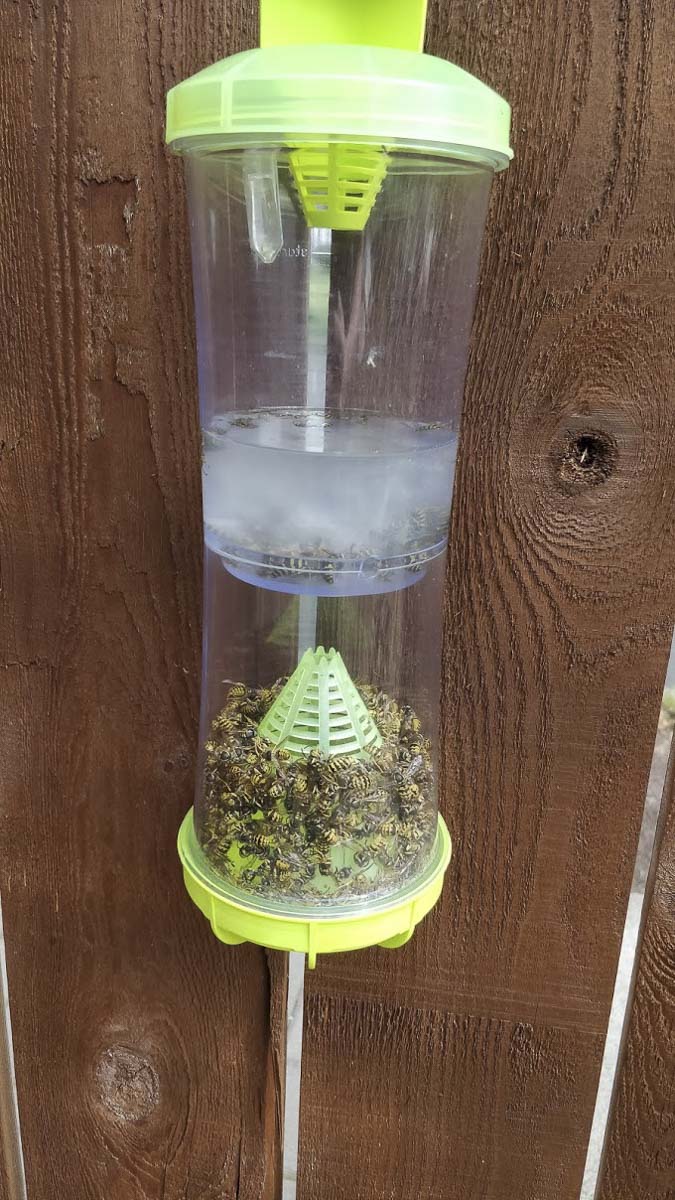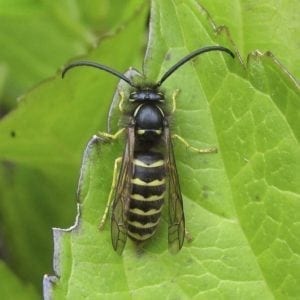Pest control workers have been busier than, well, bees, responding to all the calls from Clark County residents
CLARK COUNTY — If you’ve been outside at all this Summer, odds are you’ve had a few guests keeping you company. It’s also likely that these were not welcome guests.

Pest control folks have been keeping busy this Summer with one of the worst yellowjacket, hornet, and wasp seasons any of them can recall.
“I get about 8-10 calls a day on these things from clients that are new,” says Bill Leary of All Seasons Home and Garden in Battle Ground. “And at least a few from others that are (existing clients).”
Leary has been a pest control expert and entomologist for over three decades, and has been in this area since 1994. He says there have been a few bad years for yellowjackets, but this is the worst in his memory.
“It’s been a perfect storm for these guys,” Leary says. “We haven’t had really hard Winters for the last couple of years.”
With no major cold snaps in November of last year, or this past April, when yellowjacket and hornet queens are out of their nests, there have been a whole lot more to produce workers, which is what you’re encountering by their dozens in your yards, gardens, and pretty much
anywhere else.
The influx of these panic-inducing pests has sent a lot of people hunting for traps wherever they can find them. Leary says he hasn’t been able to get them at the big box home improvement stores for a couple of weeks now, but local hardware stores may have a few. You almost have to be there when the shipment arrives to get any though.
“I had people checking Amazon to get the priority two-day delivery,” says Leary, “and they called me back and said, ‘well they’re backordered on Amazon until August 26th.”
Hot summer contributing to problem
Tuesday was the 28th day Vancouver topped 90 degrees — an all-time high according to the National Weather Service. We could hit 90 again Wednesday before things finally start to cool down.
“(Wasps) have got a really high food, and water, and paper requirement,” Leary says, “and when it gets hot and humid those nests are growing exponentially. And all those larva and whatnot have to be fed, so they’re on a mission.”

Since humans tend to water their lawns this time of year, or have other sources of water, urban landscapes are an ideal environment for wasps, hornets and yellowjackets.
“Some people having swimming pools and they can’t use them, they’re so bad,” says Leary.
Hornets and yellowjackets are actually in the wasp family, and there are a variety of different species around here. Hornets tend to be active earlier in the Summer, and Leary says they haven’t been especially bad this year. Yellowjackets, on the other hand, ramp up in numbers as the Summer goes along, especially when things get really hot.
Paper and mud dauber wasps also love the heat, and have been busy building nests. Leary called us from a house where he said he was working to remove about fifty wasp nests from up under the eaves. In general, wasps aren’t usually aggressive, though some varieties will retaliate if they feel threatened. Mostly, they just look scary, and if they do sting you, it tends to hurt a lot.
Leary says usually people will find that some types of traps work better in different areas, but this year it doesn’t seem to matter. They’re filling up with the pesky critters, sometimes within days or even hours of being put up.
Remember, they should be spaced about 50 feet apart, and away from areas where humans will be gathering. “You’re basically putting out a picnic,” says Leary.
Fortunately, if you place a few strategically it can make being outside much more bearable.
“I’ve had several people put out traps, and that slows it down enough to where they can be outside,” Leary says.
Despite the tens of thousands of yellowjackets showing up in traps across the area, Leary says another mild Winter would likely see them come back just as bad, or worse, next year.
“Trapping right now you’re getting the workers,” he says. “You’re not going to catch the queen unless you leave your traps out through October.”
And that’s the key. Come October, new queens leave what nests remain, and look for a place to hibernate over the Winter. Next April they’ll head out looking for areas to build their nests for the Summer. Those are the most effective times to have traps out, because they can catch queens before they can hibernate or start a nest. But a lot of us don’t think to put them up before things get really bad, or we take them down too soon.
If you’re looking forward to October, when the yellowjackets, hornets and wasps finally take a break, be warned — Leary says it could be an especially bad Autum for people afraid of spiders, and for the same reason. The mild Winters have been kind to spiders who live in your yard, hedges, and garden, but once things get colder they’ll start looking for warmth. That tends to bring them right into our homes.




